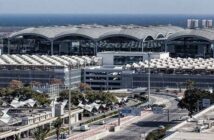
Two great rivers turn the city of Lyon into a wishbone. And there are many places to make that wish.
It could be looking down from the improbable heights of the basilica with a gilded Virgin Mary, sighing as she oversees the city.
It could be beneath the gleaming glass of the Confluence museum, one of those places where the contents of the museum will always play second viola to the building itself, or in the little streets of the old town, or, best of all, over a quenelle in a bouchon, in company with the locals while the tourists dine elsewhere in roomer and aerier establishments.
This is Lyon, a VERY French blend of history, gastronomy, and culture.
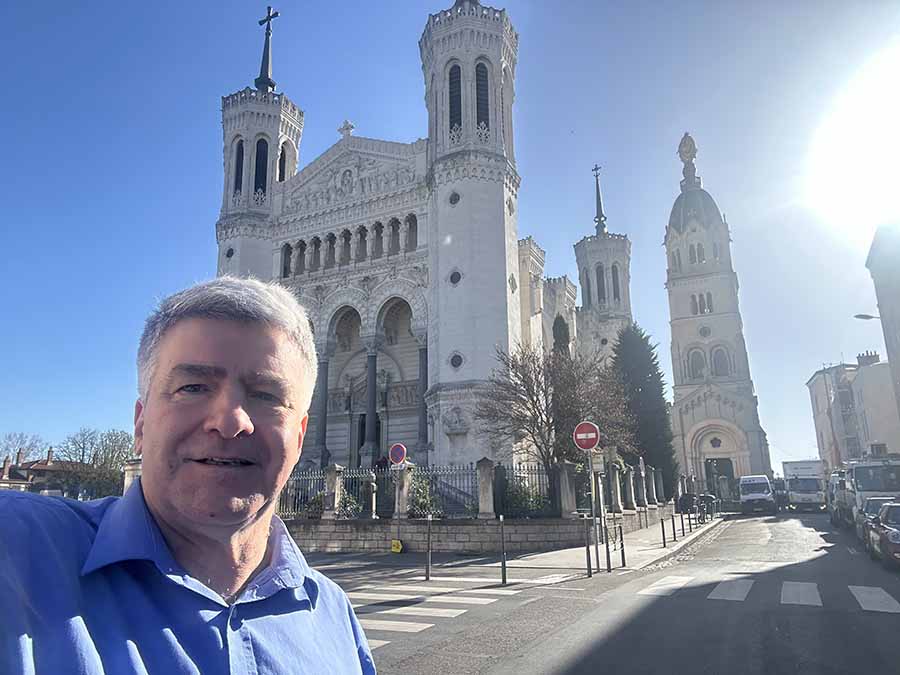
- Basilica of Notre-Dame de Fourvière: The Basilica of Notre-Dame de Fourvière, an iconic Lyon landmark, sits atop Fourvière Hill, dominating the city’s skyline. Built between 1872 and 1896 to honor the Virgin Mary, this UNESCO World Heritage Site combines Byzantine and Romanesque styles. Its exterior resembles a fortress, with four corner towers and a golden Virgin Mary statue atop the bell tower. Inside, intricate mosaics, stained-glass windows, and marble decorations dazzle, depicting scenes like Joan of Arc and the Council of Ephesus. The esplanade offers breathtaking panoramic views of Lyon, and a guided rooftop tour (included with the Lyon City Card) provides a unique perspective after climbing 300+ stairs. The crypt and gardens are free to explore.. A must-see for its architectural splendor, spiritual significance, and unrivaled city views. The rooftop tour is a highlight for adventurous visitors. Visitors can also stroll through the Jardin du Rosaire, a peaceful garden near the basilica or explore the Gallo-Roman Museum and adjacent Roman amphitheater for a dive into Lyon’s ancient history.Ride the funicular to Fourvière Hill for the Basilica (included in the Lyon City Card). The Basilica’s rooftop tour requires good weather and stamina for stairs. Basilica entry is free; rooftop tours cost ~€10 unless using the Lyon City Card.

- Fourvière Hotel: The Fourvière Hotel is a luxurious 4-star property perched on Fourvière Hill, housed in a 19th-century convent that once served as a cloister. The hotel blends historical charm with modern elegance, retaining original features like stone arches and the former chapel (now the reception area). Its 75 rooms, including “cell” rooms inspired by the nuns’ quarters and loft-style suites with floor-to-ceiling windows, offer serene views of the city or the hotel’s gardens. The hotel features a spa with a heated pool, a gastronomic restaurant, Les Téléphones, and a bistro, La Buvette, both showcasing Lyonnaise cuisine. The peaceful ambiance and proximity to the Basilica of Notre-Dame de Fourvière make it a unique retreat.. Perfect for history buffs and luxury seekers wanting a tranquil stay with easy access to Fourvière’s attractions. The convent’s architecture and hilltop location enhance the experience. The Fourvière Hotel is ideal for a historic, upscale experience near the Basilica.
- Institut Lumière: The Institut Lumière, located in the Monplaisir district, celebrates Lyon’s role as the birthplace of cinema. Housed in the Lumière family’s Art Nouveau mansion and a glass-encased factory hangar, it honors brothers Auguste and Louis Lumière, who invented the cinematograph and shot the first motion picture in 1895. The museum features interactive exhibits on early filmmaking, including cameras, projectors, and screenings of the Lumières’ black-and-white shorts, like Workers Leaving the Lumière Factory. The institute also hosts film festivals, retrospectives, and temporary exhibits. The mansion’s opulent interiors add a whimsical charm.. A cinephile’s dream, offering a fascinating look at cinema’s origins in a beautifully preserved setting. Check for English-language tours or screenings.

- La Jura Café bouchon: La Jura Café, located in the Presqu’île district, is a charming, traditional Lyonnaise café known for its cozy ambiance and authentic cuisine. This family-run spot serves classic Lyonnaise dishes in a warm, checkered-tablecloth setting. Expect hearty fare like salade Lyonnaise (with bacon, croutons, and a poached egg), andouillette (pork sausage), quenelles de brochet (pike dumplings in creamy sauce), and cervelle de canut, a herbed cheese spread nicknamed “silk-worker’s brain.” Desserts include tarte aux pralines, a local pink praline tart. The café also offers regional Beaujolais wines and is praised for its friendly service.. Ideal for experiencing Lyon’s bouchon-style dining in a less touristy setting. Reservations are recommended, especially on weekends.

- Les Halles de Lyon Paul Bocuse: Les Halles de Lyon Paul Bocuse is Lyon’s premier indoor food market, named after the legendary chef Paul Bocuse, located in the Part-Dieu district. This gastronomic hub houses over 50 vendors selling high-quality regional specialties, including artisanal cheeses, charcuterie, fresh seafood, oysters, frog legs, praline tarts, and fine wines. The market’s lively atmosphere makes it ideal for brunch or lunch, with several vendors offering sit-down dining. Highlights include Charcuterie Sibilia for sausages and Maison Rousseau for seafood. Open daily (until 1 p.m. on Sundays), it’s busiest on weekends, so arrive early for seating.. A foodie’s paradise, offering a deep dive into Lyon’s culinary heritage. Perfect for tasting local delicacies or buying gourmet souvenirs. Visit Les Halles early to avoid crowds. Les Halles prices vary by vendor (€10-20 for a meal).
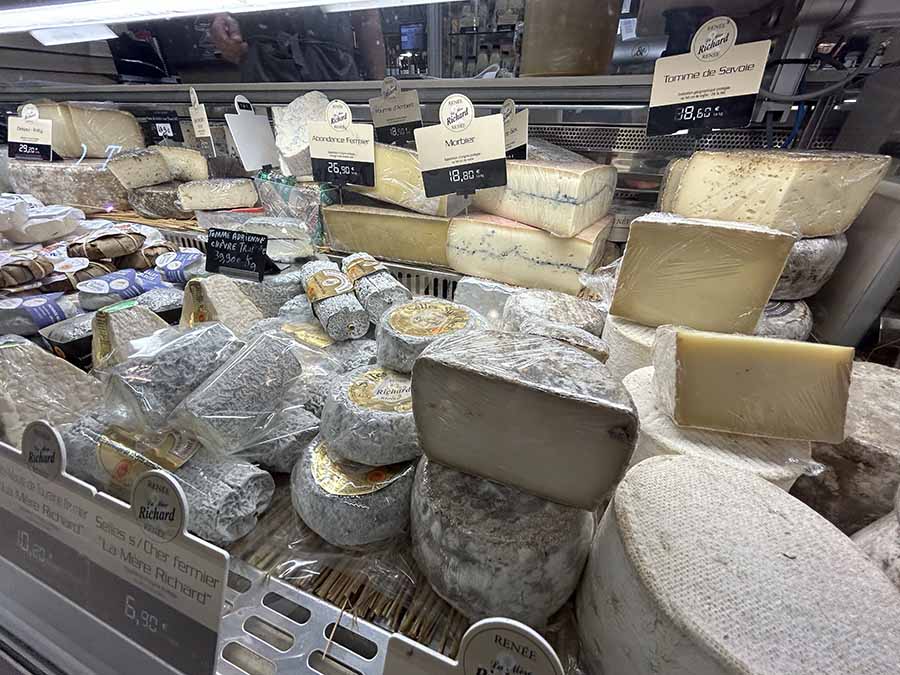
- Musée des Confluences: The Musée des Confluences, located at the confluence of the Rhône and Saône rivers in the modern Confluence district, is a futuristic museum of anthropology, natural history, and science. Its striking, glass-and-steel “floating crystal cloud” design, unveiled in 2014, is an architectural marvel. Exhibits span millennia, featuring dinosaur fossils, Egyptian mummies, samurai armor, meteorites, and a 155-million-year-old Camarasaurus skeleton. Displays, available in French and English, explore human evolution and life’s big questions. The museum’s rooftop terrace offers river views, and its café is great for a break.. Perfect for those interested in science, history, or architecture. The eclectic collections and bold design make it a standout attraction. Musée des Confluences tickets are €8-12, with discounts via the Lyon City Card.
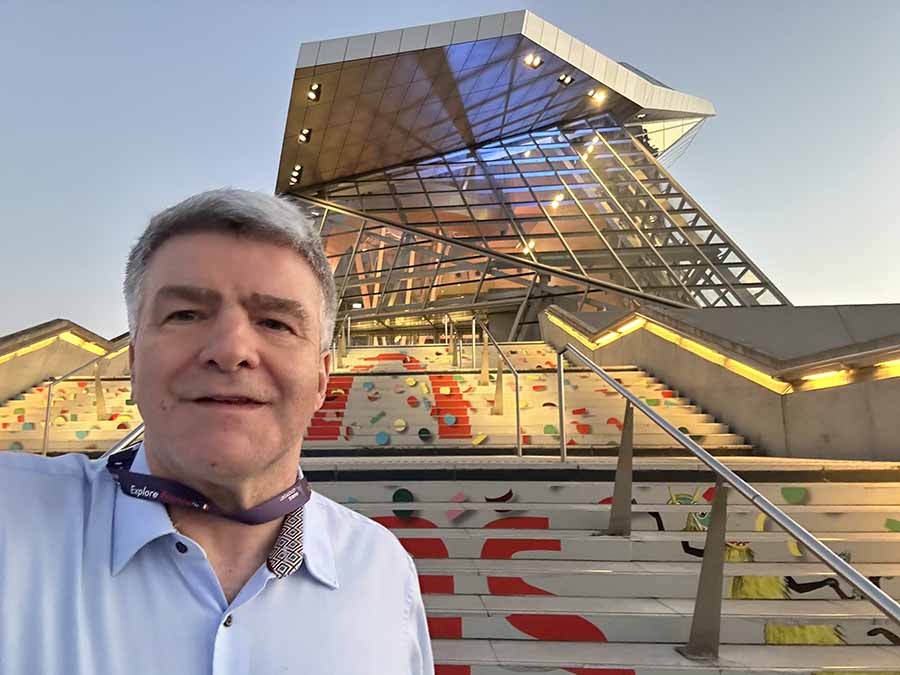
- The Ruck Hotel: The Ruck Hotel is a modern, stylish accommodation in Lyon’s Gerland district (7th arrondissement), known for its vibrant and evolving urban scene. This boutique hotel emphasizes comfort and contemporary design, featuring 154 rooms with sleek decor, high-quality bedding, and amenities like high-speed Wi-Fi and smart TVs. Its rooftop bar, Le Rooftop, offers panoramic city views, craft cocktails, and a relaxed vibe, making it a great spot for evening drinks. The hotel’s restaurant, Mama Lyon, serves a fusion of French and international cuisine, focusing on fresh, local ingredients. Its location near the Rhône River and proximity to metro lines makes it convenient for exploring Lyon’s key sites. The Ruck Hotel suits those wanting modern amenities and nightlife. Ideal for travelers seeking a trendy, comfortable base with easy access to Vieux Lyon and Fourvière Hill via public transport. The rooftop experience is a highlight for sunset views.
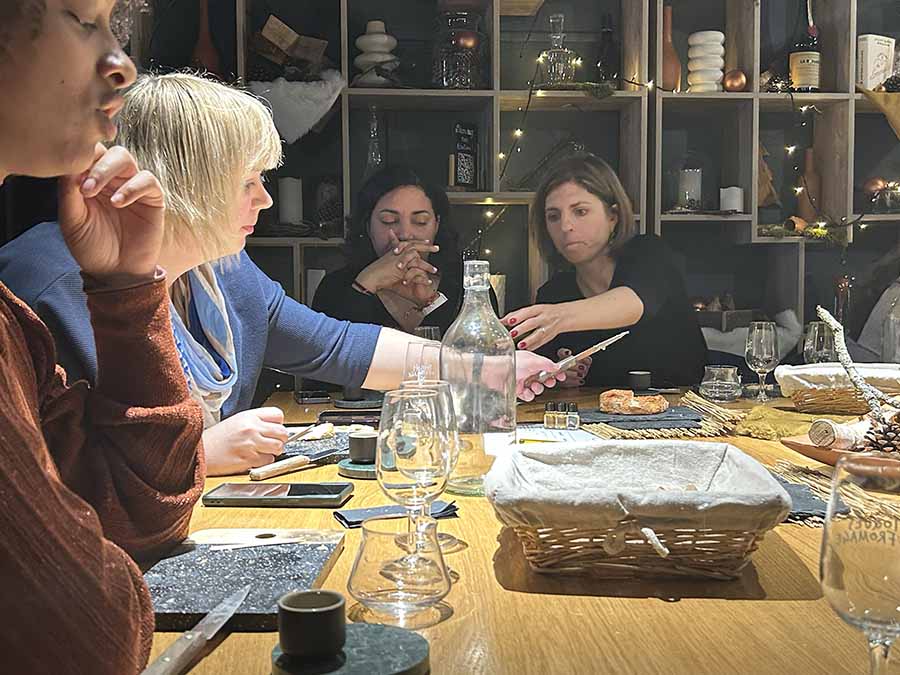
- Toques du Fromage Cheese Tasting Experience: Toques du Fromage is a renowned cheese shop and tasting venue in Lyon, often located near Les Halles de Lyon Paul Bocuse or in Vieux Lyon. It specializes in artisanal French cheeses, particularly regional varieties like Saint-Marcellin, Comté, Beaufort, and Bleu d’Auvergne. Their cheese tasting experience, often guided by expert fromagers, allows visitors to sample a curated selection paired with local wines, fruits, or charcuterie. Tastings are educational, covering cheese production, aging, and flavor profiles, and can be booked as private or group sessions. Some experiences include visits to nearby markets for a broader gastronomic context.. A must for cheese lovers, offering an immersive way to explore France’s cheese culture with expert guidance. Perfect for pairing with a Beaujolais wine tasting. Book Toques du Fromage tastings in advance. Toques du Fromage tastings start at €20.
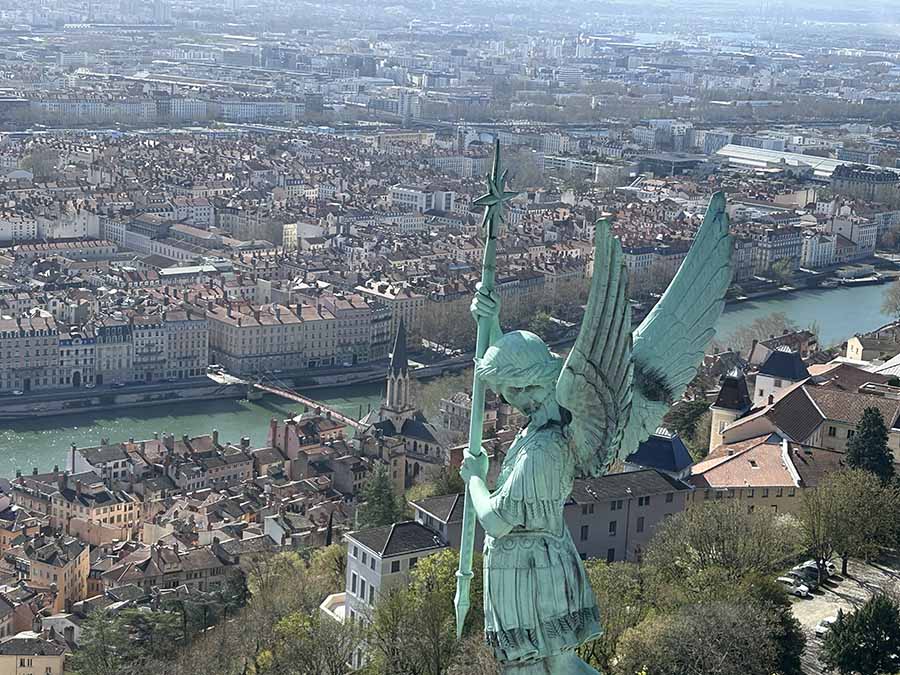
- Vieux Lyon (Old Town). Wander the cobblestone streets of this UNESCO World Heritage Site, filled with Renaissance architecture. Visit traboules, hidden passageways used by silk workers, especially between Rue Saint-Jean and Place du Gouvernement. Admire Lyon Cathedral (Cathédrale Saint-Jean-Baptiste) for its Gothic beauty and astronomical clock.
Also check out:
- Traditional Lyonnaise bouchon dishes include quenelles, andouillette, or tarte aux pralines. Popular spots include Café des Fédérations or Chez Chabert.
- Rhône and Saône Rivers: Walk or bike along the Berges du Rhône, scenic riverfront paths with cafés and barges turned into bars. Cross the Passerelle du Palais de Justice or Pont Lafayette for great photo ops. Take a river cruise for a unique perspective of the city’s bridges and architecture.
- Presqu’île District. Shop and people-watch at Place Bellecour, one of Europe’s largest pedestrian squares. Explore Rue de la République for boutiques, cafés, and historic buildings. Visit the Musée des Beaux-Arts in Place des Terreaux for art collections rivaling Paris’s museums.
- La Croix-Rousse. Explore this bohemian neighborhood, once home to silk weavers, for its vibrant street art and markets. Climb the Montée de la Grande Côte for views and quirky cafés. Visit Maison des Canuts to learn about Lyon’s silk-weaving history.
- Parc de la Tête d’Or is a sprawling park with a lake, botanical gardens, and a free zoo. Take a pedal boat on the park’s lake or picnic under the trees.
- If visiting in early December, experience the Fête des Lumières to celebrate the Feast of the Immaculate Conception of the Blessed Virgin Mary on December 8, a magical festival of lights illuminating the city.
- Check out the Musée de l’Imprimerie et de la Communication Graphique for Lyon’s printing history.
- Catch a show at the Opéra de Lyon or a film at the Institut Lumière, celebrating the birthplace of cinema.
- Confluence District is a modern, eco-friendly neighborhood at the meeting point of the Rhône and Saône.

Off-the-Beaten-Track
- Croix-Rousse Traboules: While the traboules (secret passageways) of Vieux Lyon are somewhat known, those in the Croix-Rousse neighborhood are less visited and steeped in the area’s silk-weaving history. These covered passages, used by canuts (silk workers) to transport textiles, weave through courtyards, staircases, and buildings, offering a maze-like adventure. About 40 traboules are open to the public, marked by yellow and green signs with arrows. A notable one is at 54 Rue Saint-Jean, leading to a pink tower staircase. The Croix-Rousse traboules are quieter than Vieux Lyon’s, giving a more intimate glimpse into Lyon’s past, including their use by the French Resistance during WWII. Perfect for history buffs and explorers seeking a free, self-guided adventure. The bohemian vibe of Croix-Rousse, with its high-ceilinged buildings (designed for silk looms), adds to the charm. Download a traboule map from Lyon’s Tourism Office or join a guided tour for context, but wandering independently feels more adventurous. Respect residents’ privacy by keeping noise low.
- Musée des Tissus et des Arts Décoratifs: Tucked away in the Presqu’île district, the Musée des Tissus (Textile Museum) is a hidden gem celebrating Lyon’s silk industry, which once made the city Europe’s silk capital. The museum showcases centuries of textiles, from Renaissance fabrics to modern designs, with highlights like silk gowns and intricate tapestries. It includes a fabric restoration workshop and a FabLab for artists. The adjacent Musée des Arts Décoratifs displays opulent 18th-century interiors, offering a glimpse into Lyon’s affluent past. Ideal for fashion enthusiasts or those curious about Lyon’s economic history. Its low visitor numbers make for a peaceful experience, and the gift shop sells beautiful silk scarves as souvenirs. Located at 34 Rue de la Charité; closed Sundays and Mondays. Guided tours include Jacquard loom demonstrations for a hands-on experience.
- Centre d’Histoire de la Résistance et de la Déportation: This lesser-known museum in the 7th arrondissement (near Perrache) explores Lyon’s role as the “Capital of the Resistance” during WWII. Housed in a former military school, it details the city’s defiance against Nazi occupation through artifacts, personal stories, and multimedia exhibits. Lyon was a hub for Resistance activities from 1940 to 1942, and the museum highlights local heroes and the city’s “free zone” status. A poignant, educational stop for history lovers seeking a deeper understanding of Lyon’s wartime legacy. Its off-the-radar status ensures a quiet visit. Located at 14 Avenue Berthelot; check for English-language tours. Pair with a visit to nearby Place Carnot for a local café experience.
- Croix-Rousse Painted Staircases and Murals: The Croix-Rousse neighborhood is a canvas for vibrant street art, including painted staircases and large-scale murals. The Mur des Canuts (Wall of the Silk Weavers) at Boulevard des Canuts is Europe’s largest mural, depicting the area’s silk-working history with trompe-l’œil detail. Colorful staircases, like those on Rue Prunelle, are Instagram-worthy and less crowded than Vieux Lyon’s tourist spots. These public art pieces reflect Lyon’s creative spirit and industrial past. Free and accessible, these spots offer a bohemian, local vibe perfect for photographers and art lovers. The hilly streets add a sense of discovery. Combine with a visit to the Croix-Rousse Market (closed Mondays) for organic produce and local vibes, less touristy than Saint-Antoine.
- Île Barbe: The Île Barbe, a small island in the Saône River (9th arrondissement), is a serene escape from Lyon’s bustle. Once home to a 5th-century monastery, it now features lush greenery, historic ruins, and charming houses. The island’s northern tip is a public park, ideal for picnics, while the southern end has private residences. Stop at Auberge de l’Île Barbe, a Michelin-starred restaurant, for a splurge-worthy meal of refined Lyonnaise cuisine. Its tranquil, village-like atmosphere feels far from the city, yet it’s just a 15-minute drive or bus ride (line 40) from central Lyon. Perfect for couples or those seeking nature. Visit on a weekday to avoid weekend crowds. Bring a picnic to enjoy by the river.
- Les Puces du Canal Flea Market: Located in Villeurbanne, just outside Lyon, Les Puces du Canal is France’s second-largest flea market, open Sundays from 7 a.m. to 1 p.m. This sprawling market offers vintage furniture, vinyl records, retro clothing, and quirky antiques. Its family-friendly atmosphere includes food stalls and a buvette (bar) for coffee or wine. Unlike Lyon’s touristy markets, it attracts locals hunting for treasures. A treasure trove for bargain hunters and vintage enthusiasts, with a lively, non-touristy vibe. Arrive before 8:30 a.m. to beat the rush and book a lunch table early. Take tram T1 to Villeurbanne or drive (free parking available). Cash is preferred for small purchases.
- Luminarium or Café Sofffa: For a cozy, local experience, visit Luminarium (in Croix-Rousse) or Café Sofffa (Guillotière or Hôtel de Ville). Luminarium is a homey café with soft lighting, organic teas, and Mokxa coffee, perfect for a quiet afternoon with a book. Café Sofffa doubles as a coworking space, offering a €5 hourly rate with unlimited coffee, tea, and a buffet of cakes and biscuits. Both are tucked away from tourist crowds, with welcoming, eclectic decor. These cafés embody Lyon’s laid-back, creative culture, ideal for relaxing or connecting with locals. They’re great for digital nomads or those seeking a warm escape in winter. Luminarium is at 11 Rue de l’Arbre Sec; Café Sofffa has locations at 13 Rue d’Aguesseau (Guillotière) and near Hôtel de Ville. Arrive early for the best seats.
- Fishbones Tunnels: Beneath Lyon’s Croix-Rousse hill lies a mysterious network of tunnels known as the “Fishbones” (Arêtes de Poisson), an enigmatic underground system possibly dating to Roman times or the 16th century. Discovered in the 1950s, their purpose remains unclear—hypotheses range from water storage to secret escape routes. While not officially open to the public due to safety concerns, guided urban exploration tours occasionally grant access through local associations. A thrilling, unconventional adventure for history and mystery enthusiasts. The tunnels’ obscurity adds to their allure. Check with Lyon’s Tourism Office or urban exploration groups like Cataphiles Lyonnais for legal tour options. Never explore independently due to risks.
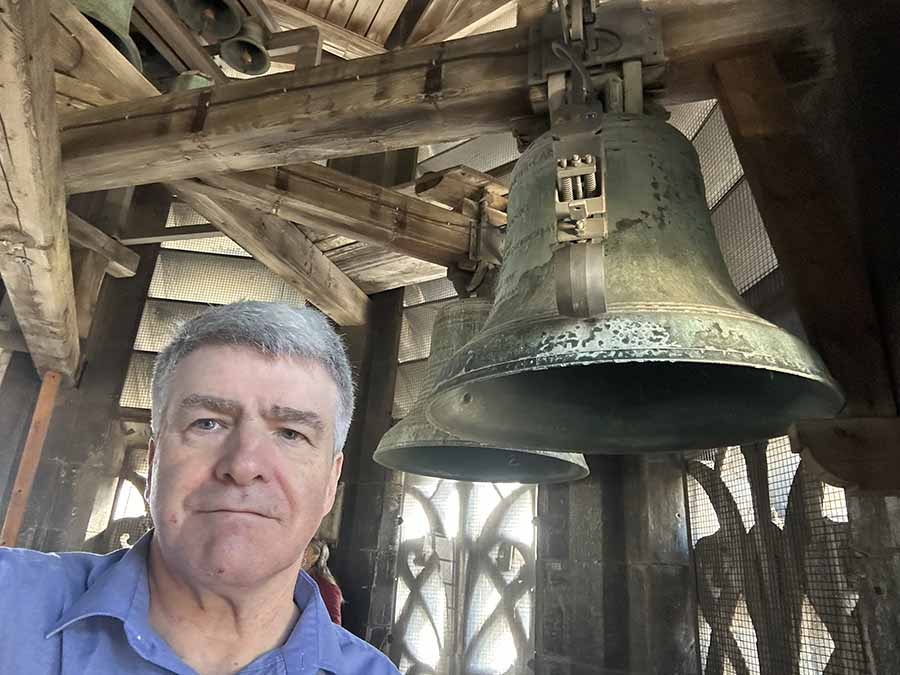
Day trips
- The short train ride to Pérouges, a medieval village with stone streets and artisan shops,
- Tthe Beaujolais wine region for vineyard tours and tastings, just 30-40 minutes away
- Vienne for more Roman ruins and a charming riverside setting.
- The little town of Ars, about 30km north of Lyon, famous for the holy life and labours of Saint John Vianney
Quote:
“The ancient and celebrated Lugdunum, a city situated upon the confluence of the Rhone and Saone, two people, who, though of tempers extremely unlike, think fit to join hands here, and make a little party to travel to the Mediterranean in company.” – Thomas Gray 1739.



